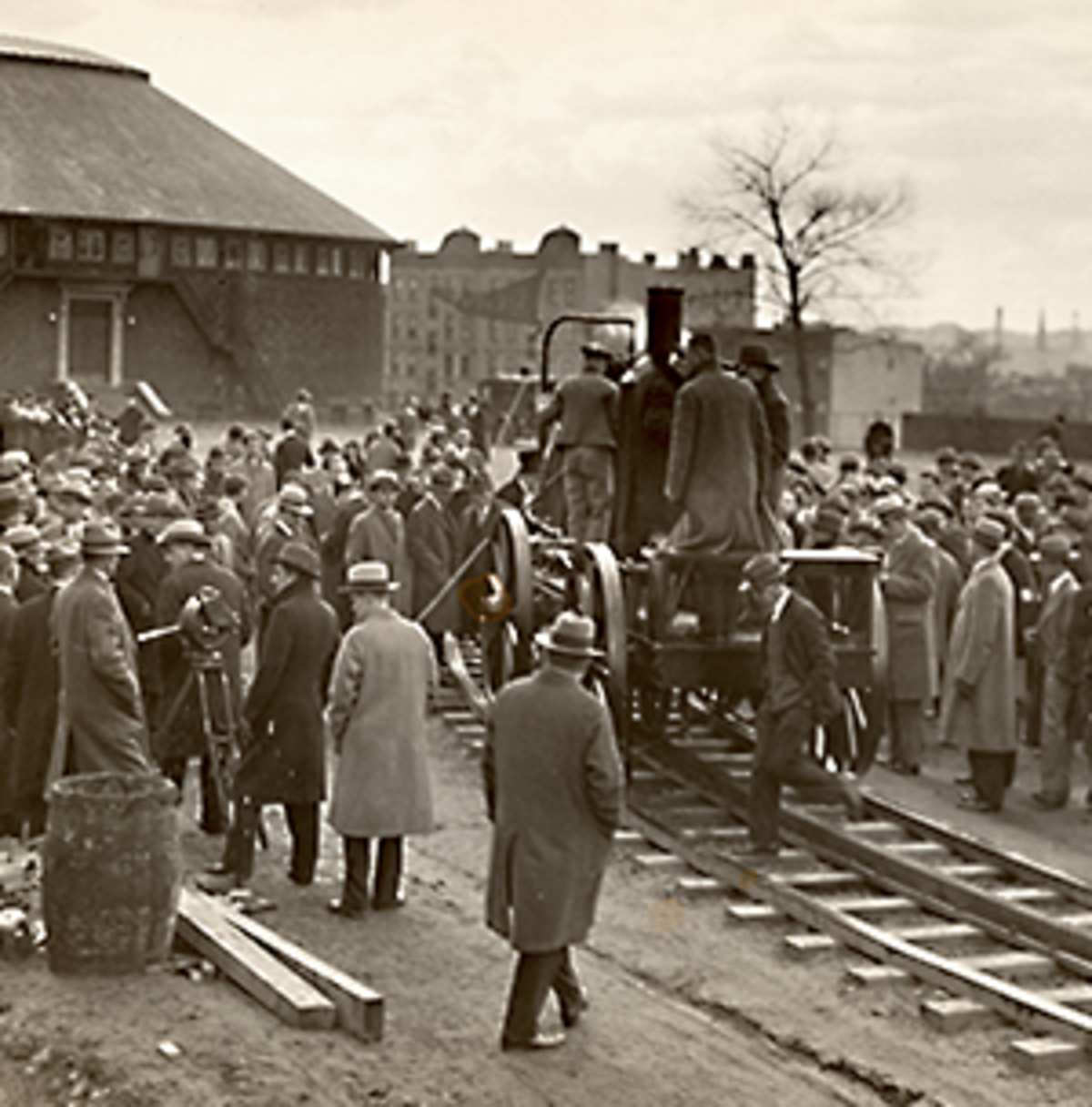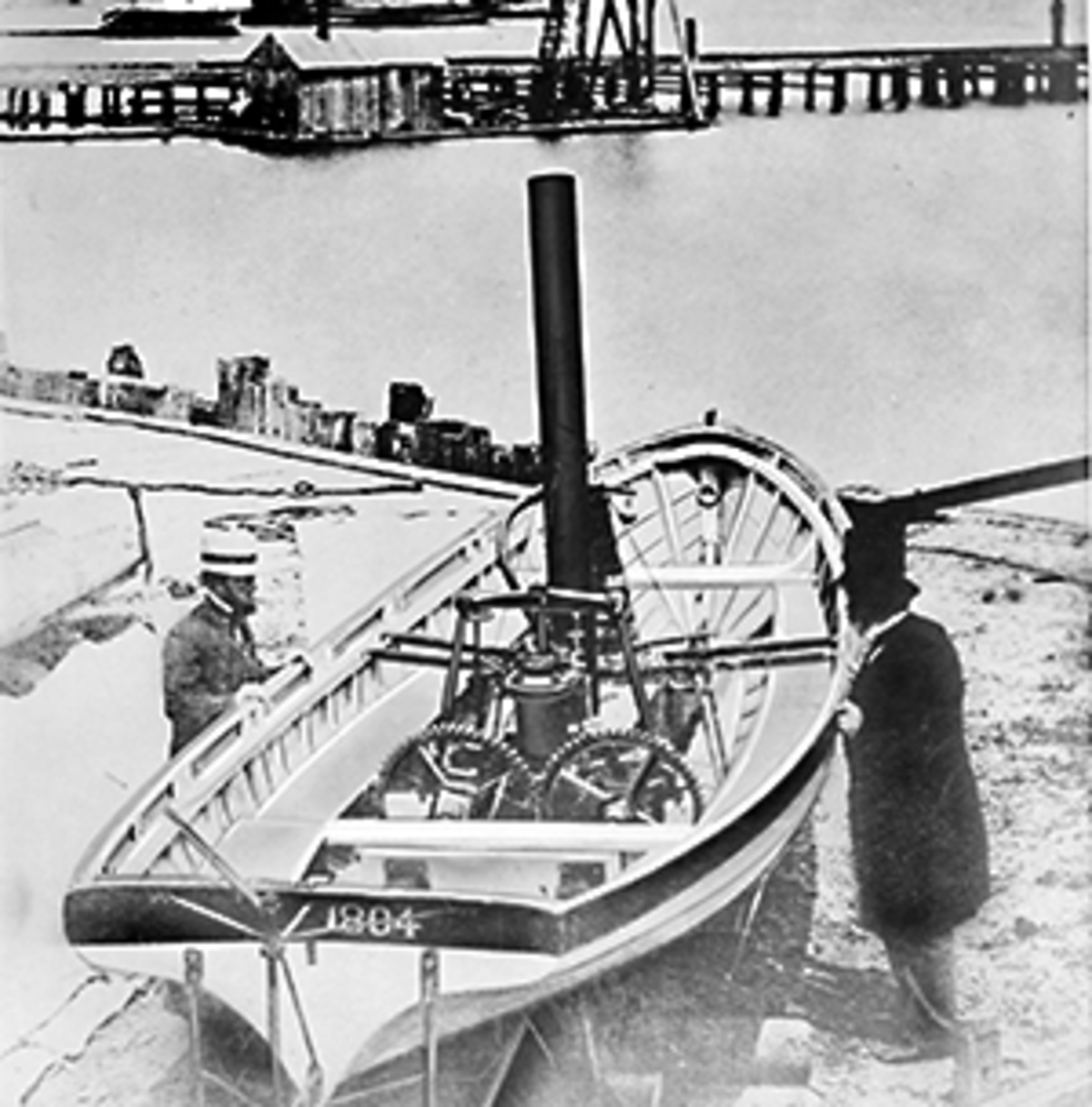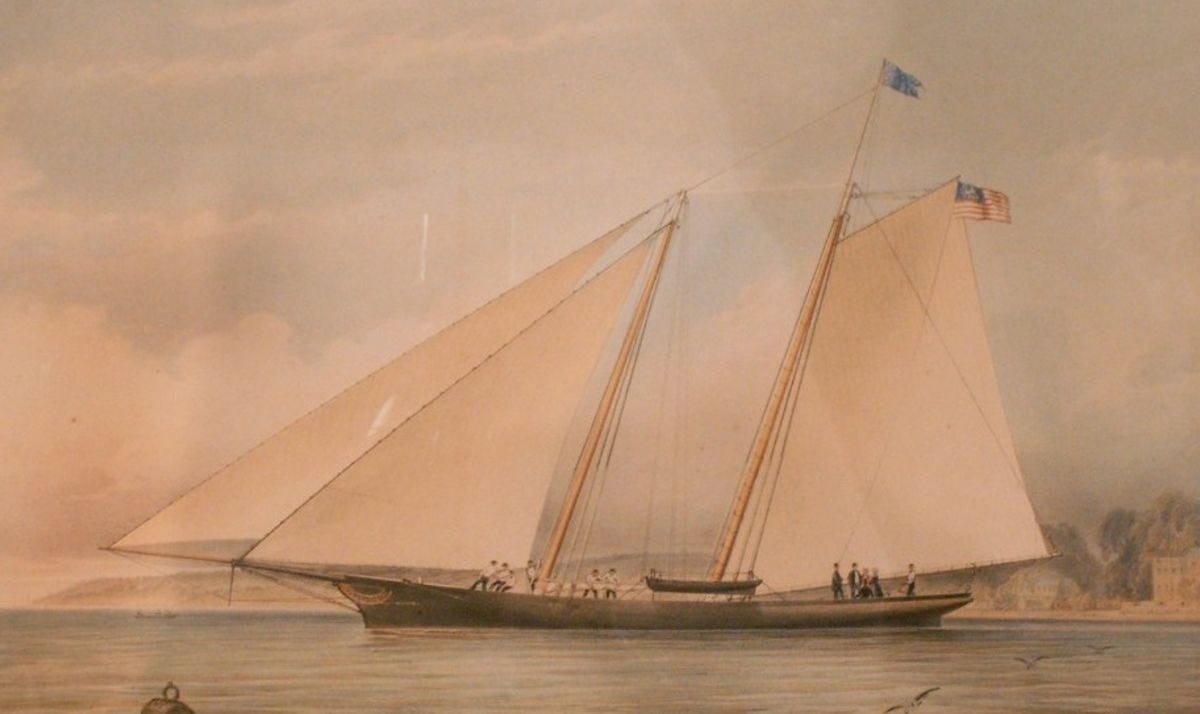America's first commuter trains – and the first cowcatcher
 Circular-track train prototype on Stevens campus
Circular-track train prototype on Stevens campusHaving successfully established transport on river and sea, the family next looked inland.
Robert Stevens his brother Edwin turned their attention to realizing their father's dream of establishing a commercially successful railroad, the first in the new nation. Col. Stevens and his sons engineering and built a prototype locomotive in 1826 on a circular track on the site of the present-day Stevens Institute of Technology campus, demonstrating the first American-built locomotive.
Building on that successful test, the family constructed an overland rail line from Perth Amboy, New Jersey to the state capital in Trenton, where passengers could then transfer to steamboat service down the Delaware River to Philadelphia. The total trip required only 10 to 11 hours' time from Manhattan, cutting several days off the previous journey by horse.
On a trip to England, Robert was struck by inspiration once again. Crossing the Atlantic, he sketched designs for improved tracks and conceived of the T-rail (also known as a flange rail), which has since become the predominant form of railroad track used worldwide. Later Robert also invented the hook-headed spike and, to ease the passage of trains through the wildlife-filled American countryside, the first cowcatcher attached to the front of trains.




